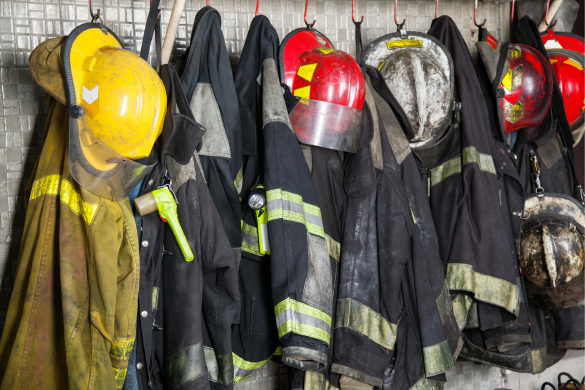Since its introduction in the early 1900s, the endotracheal tube has been a mainstay of airway management. However, there are a number of potential complications associated with its use, including unrecognized esophageal intubation. If left untreated, this can lead to serious medical emergencies. This article will outline the signs and symptoms of unrecognized esophageal intubation, as well as how to prevent it from happening.
Definition of Unrecognized Esophageal Intubation
Unrecognized esophageal intubation is a medical condition in which a tube has been inserted into the patient’s esophagus, instead of their trachea during an intubation procedure. This dangerous mistake can easily be made due to many reasons, including lack of proper training and lack of appropriate monitoring.
This type of misplacement can lead to severe consequences such as vocal cord damage, hypoxia and aspiration pneumonia, among others. It is also possible for unrecognized esophageal intubation to take place when no tube is successfully placed during the procedure, leading to complications such as difficulty breathing. It is essential that healthcare providers are aware of the dangers of this condition and take the necessary steps to avoid it.
Causes of Unrecognized Esophageal Intubation
Unrecognized esophageal intubation is a serious medical concern with potentially severe consequences. This occurs when an endotracheal tube is mistakenly placed in a patient’s esophagus instead of the trachea, preventing oxygen from entering the lungs. Some common causes of this mistake are lack of training and preparation during intubation, inexperienced medical professionals, inappropriate laryngoscopes used during intubation, miscommunications in the operating room and incorrect techniques applied to locate the correct intubation site.
In addition, medications administered prior to the procedure can cause unfavorable conditions for intubation and further contribute to unrecognized esophageal intubations. It is important that proper measures are taken to prevent these errors from occurring in order to protect patients receiving care in hospitals or other medical settings.
Symptoms of Unrecognized Esophageal Intubation
Symptoms appear almost immediately after the mistaken intubation. These include difficulty breathing and displaying signs of discomfort and panic, restlessness, or shock. Severe chest pain and blood-streaked saliva are also common symptoms of incorrect esophageal intubation.
The patient may also experience hoarseness, dysphagia (difficulty swallowing), bleeding from the chest or mouth and nausea/vomiting later on as a result of this type of medical mishap. If left untreated, unrecognized intubation can lead to severe respiratory issues such as obstruction, infection, pneumonia and even death. It is important for healthcare professionals and patients to immediately recognize these symptoms in order to ensure that continued health complications will be avoided.
Diagnosis of Unrecognized Esophageal Intubation
A diagnosis is typically made through physical exam, endoscopy, blood tests, and imaging studies such as CT or MRI. It is important to seek immediate medical attention should any of the aforementioned symptoms arise in order to prevent further damage or even death due to delayed treatment.
Treatment of Unrecognized Esophageal Intubation
Treatment largely depends on how long the tube is left in place, ranging from suctioning the inner surface of the esophagus, administration of antiemetic drugs, and endoscopic removal if necessary. Due to the serious nature of this condition, it is strongly recommended that medical personnel always double-check for correct placement of an endotracheal tube prior to beginning anesthesia for the patient’s safety.
Prevention of Unrecognized Esophageal Intubation
Proper prevention measures must be taken to reduce the likelihood of this severe event occurring, including continual monitoring of vital signs, verification of tube placement during intubation, confirming connections between breathing circuits and endotracheal tubes during initialization and deconstructing/changeovers/maintenance, and ensuring that any changes to mechanical ventilation are carefully vetted and monitored. Though recognizing the potential for harm from unrecognized esophageal intubation is alarming, with appropriate practices in place it can be prevented.
Research on Unrecognized Esophageal Intubation
Despite awareness about the issue, many of these cases go unrecognized and lead to critical side effects. Research studies are now aimed at developing evidence-based protocols and practices that will reduce situations of unrecognized esophageal intubations.
In particular, ultrasound is being researched as a potential tool for distinguishing between the esophagus tube and the trachea before starting any type of procedure. As knowledge on this topic continues to grow, there is hope that unnecessary complications due to unrecognized esophageal intubations can soon become a thing of the past.
Questions to Ask Your Doctor about Unrecognized Esophageal Intubation
If you or a loved one is experiencing symptoms that could potentially be attributed to unrecognized esophageal intubation, it is important to discuss your concerns with your doctor. This is the only way to get medical advice and evaluation related to your potential diagnosis.
When speaking with your physician, there are vital questions that can help inform a diagnosis: What are the common signs and symptoms of unrecognized esophageal intubation? Could any other underlying conditions be causing these symptoms? Are specialized tests needed for further analysis? How likely is it that I am experiencing unrecognized esophageal intubation? Can these signs and symptoms be managed effectively with medication or other therapies?
Answering each of these questions thoroughly with your doctor will give you the most comprehensive understanding of whether or not unrecognized esophageal intubation is a possible explanation for the issue at hand.
The failure of the tracheal intubation should be investigated by an attorney. If there are any symptoms that indicate unrecognized esophageal intubation, the lawyer should investigate the case to see if it is a viable medical malpractice case.
Contact the expert personal injury attorneys at Breit Biniazan for professional legal representation.



